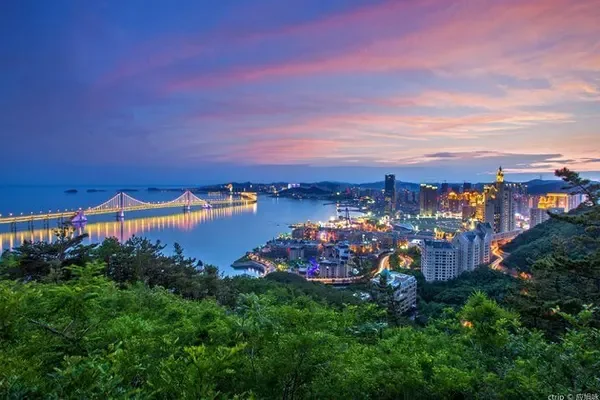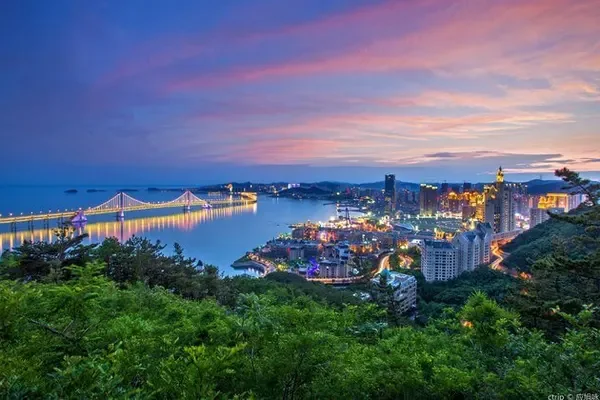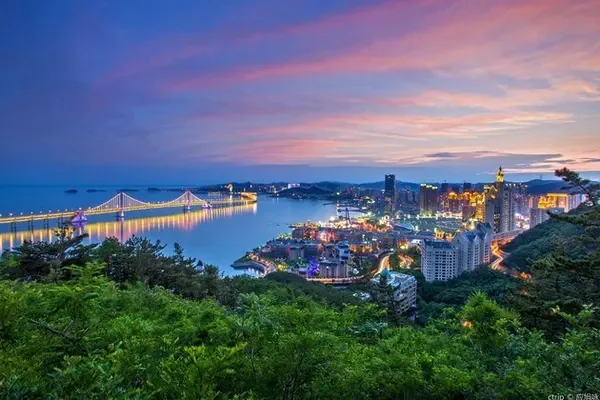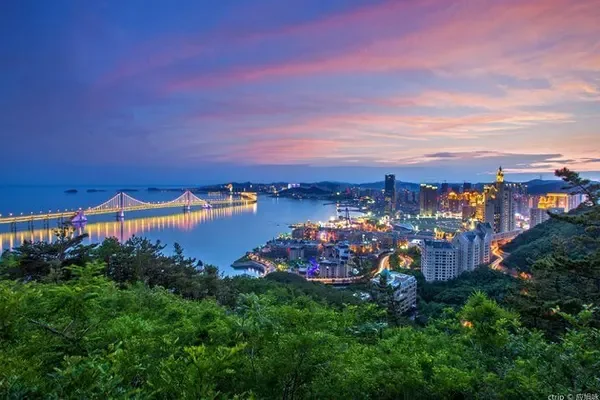It is related to Kangxi, Daoguang, Tongzhi, Guangxu, and Cixi, and the oldest church in Beijing that was attacked by the Boxer Regiment——Visiting record of Xishiku Catholic Church
1. Preamble
It was only two years ago that I heard about such a church called Xishiku. It was said that it was one of the 50 secret scenic spots in Beijing that were neglected by people. I went there for two years and was not allowed to go in because it was undergoing cultural relics restoration. That afternoon, when I stood at the door again with regret on my face and was reluctant to leave, the young man who guarded the door suddenly said: "If you really want to come, come at 6:30 tomorrow morning." Well, it’s only open to the public every morning on the morning of mass.” I expressed my thanks and left, so I had this opportunity to visit.
It was the same young man who told me that according to the plan, the church will open to the public on August 10th this year (11th? or 19th? Can’t remember).
2. About Xishiku Church
Xishiku Church, whose original name is the Church of the Savior, commonly known as the North Church, is located at No. 33 Xishiku Street, Xicheng District, Beijing. One of the oldest churches. Xishiku Church was listed as a key cultural relic protection unit in Beijing in 1984; in June 2006, it was listed as the sixth batch of national key cultural relic protection units.
3. The historical evolution of Xishiku Church and the relationship between the four emperors and one empress dowager
The history of Xishiku Catholic Church can be traced back to the 42nd year of Kangxi (AD 1703). Because two Catholic priests, Hong Ruo and Liu Ying, cured the disease of Emperor Kangxi, they were awarded the title of Canchikou in the gate of Xi'an, the imperial city. A piece of land was used to build a church, which is the predecessor of today's Xishiku Church, named Salvation Church. In the middle of the Qing Dynasty, there were constant frictions between the anti-Catholic forces and the Catholic Church. In the seventh year of Daoguang (AD 1827), the Qing government sealed up the Canchikou Catholic Church and confiscated all the church property.
After the Second Opium War, the Qing government returned the land of the church to the church. In the third year of Tongzhi (1868 A.D.), bishop Meng Zhensheng presided over the establishment of a tall Gothic building on the original site of Beitang. The tall bell tower of the church aroused the displeasure of the Empress Dowager Cixi and Emperor Tongzhi. After negotiations with the Holy See and the French government, the church agreed to move the church to Xishiku, and the Qing government funded the construction of a new church building. In the 14th year of Guangxu ( AD 1888) The new building was officially completed.
On the evening of June 15th in the twenty-sixth year of Guangxu in Qing Dynasty (1900 A.D.), a group of Boxers led by Duan Wang Zaiyi began to attack Xishiku Church. From June 17, the Qing army also participated in the attack. But the church remained tenacious. Due to the lack of food, after half a month of siege, the personnel in the church ate up all the mules and war horses used for service, and began to eat the bark and weeds in the courtyard. The commander and deputy commander of the garrison and the bishop of the church died in battle one after another. On August 16 of the same year, after the Eight-Power Allied Forces captured Beijing, a special rescue team was formed to bring the sensational Xishiku church incident to an end. (The Boxers’ siege, adherence by the believers, and coalition forces’ relief are the Gengzi incident) After the Gengzi peace talks, the Qing government compensated and funded the rebuilding of the severely damaged Xishiku Church building, forming the current Xishiku Church complex.
During the "Dedicate Church and Temple" movement in 1958, the Xishiku Church was turned over to the state, and the church's collection of church books, "cradle books" in various languages and early printed books and a batch of rare documents were transported out of the church and handed over to Beijing library collection.
In 1985, China allocated funds for reconstruction, restoring normal religious activities.
In 1984, Xishiku Church was listed as a cultural relic protection unit in Beijing; in June 2006, it was listed as the sixth batch of national key cultural relic protection units.
4. Architectural layout of Xishiku Church
Xishiku Church is a building combining Chinese and Western walls. The main building of the church is a three-story Gothic building with 11 spiers at the top. The building plane is cross-shaped, with a building area of about 2200 square meters and a height of 16.5 meters The tip of the bell tower is about 31 meters high. It used to be the tallest single building in the inner city of Beijing. There are three pointed arched entrances on the front of the church building. There are four holy statues of St. John and St. Paul carved between the entrance arches. The doors and windows on the front are decorated with white marble carvings. There is a magnificent circular rose window on the main span of the main entrance, and there are 80 glass windows of different sizes around the chapel.
Surrounding the Gothic church building is a traditional Chinese-style platform, surrounded by white marble railings, and the railings and railings are decorated in traditional Chinese designs. There is a stele pavilion on the left and right sides of the front of the hall, which is designed for the top of the mountain with yellow glazed tiles and double eaves. Inside the pavilion are the decree stele for the relocation of the Catholic Church in the 14th year of Guangxu (1889) and the inscription of the Catholic Church in Manchu and Chinese.
5. Review of the visit to Xishiku Church
The following photos are the view of the door when the church was closed the afternoon before the visit.





The following is the view of the church when the church door was open at 6:45 in the morning on the day of the visit and the mass was being held inside the church.




What is the purpose of the two symmetrical buildings on both sides of the main passage? I still haven't figured it out.




On both sides of the main entrance of the lobby, there are two Chinese-style stele pavilions. In the pavilions, there are respectively a stele for the relocation of the Catholic Church in the 14th year of Guangxu (1889) and a stele for the Catholic Church in Manchu and Chinese.

This is the West Stele Pavilion.

The abandoned original stele on the grass outside the pavilion on the west side.



In the 14th year of Guangxu in the Qing Dynasty, the inscription on the relocation of the Catholic Church in Manchu and Chinese.



On the east side is the Mount of Our Lady and the statue of the Virgin Mary (the Virgin Mary is the birth mother of Jesus and a figure of Christian belief).

This is the East Stele Pavilion.

In the 14th year of Guangxu (1889), the Catholic Church moved to build the monument.





The back of the inscription.




There is a platform in front of Beitangtang, and there are white marble railings on three sides.


Looking west from the east stele pavilion to the west stele pavilion.

There are three pointed arched entrances on the front of the church building. Four saints, such as St. John and St. Paul, are carved between the entrance arches. The doors and windows on the front facade of the building are decorated with white marble carvings. The round rose window in the front of the church is inlaid with white marble and engraved with the icon of Jesus the Good Shepherd.

The three golden angel statues at the top of the church are also a major feature of the Xishiku Catholic Church.


There is a stele of "Building the Catholic Church" in the thirteenth year of Guangxu, which is difficult to read because of the small contrast.

The following is the exterior view of the buildings along the east side of the church.


There are statues of St. Luke and St. Mark in the niches on both sides of the corner of the church.


There are 80 glass windows of different sizes around the chapel.



The faucet with Chinese elements is integrated into the water outlet, Gothic architecture, plus Chinese-style faucet, a typical Chinese and Western architecture.


The back view of the stele pavilion on the east side.
The following is the view of the west wall of Xishiku Church.









If you don't go to this position, you don't even know that there is a congregation of nuns here.

When I saw the word nun, I thought of Mother Teresa (Mother Teresa, August 27, 1910-September 5, 1997), also known as Mother Teresa, Mother Teresa, and Mother Teresa. A well-known Catholic charity worker, mainly serving the poor in Calcutta, India. He was awarded the Nobel Peace Prize in 1979 for his lifelong dedication to eradicating poverty. ).
There is a story called - Mother Teresa stopped the war
Mother Teresa is known as the saint of the poor. The thing is, since the outbreak of the Middle East war between Israel and Palestine, it has brought huge disasters to the people of Israel and Palestine. Although the United Nations and many countries intervened in mediation, a ceasefire has not been possible. Mother Teresa went to meet the leaders of both Israel and Palestine and made a proposal to them: a three-day truce so that she could pick up the children who had lost their families and had no one to take care of them. As a result, both sides accepted Mother Teresa's request irresistibly, and three days later; the war did not continue. Although the Israeli-Palestinian issue has not yet been resolved, and there are still conflicts between the two sides; but as a war, it is indeed over, and the person who stopped this war is her Mother Teresa. For this she won the Nobel Peace Prize.
Mother Teresa is known as the most undisputed winner of the Nobel Peace Prize since Dr. Schweizer won the Nobel Peace Prize in 1952. She is also one of the four most admired figures by American teenagers in the 1980s.





The back view of the stele pavilion on the west side.
The following is what you see after entering the interior of the Sishiku Church lobby.

When entering the church, the mass is in progress.

There are thirty-six bright pillars in the hall, and the tops of the pillars are all carved in the shape of cabbage leaves. The height of the pillars is 4 feet and 9 feet. There is a main altar and a supporting platform in the lobby. There is a chanting building in the main entrance of the lobby. The plane of the lobby has a cross-shaped facade. Gothic architecture is characterized by the use of pointed arches in order to make the house soaring. To the north of the main altar in the lobby is the Hall of Suffering. The tombstone of Fan Guoliang is inlaid on the west wall of the Misery Hall. During the construction of the Xishiku North Church, there were also the bishop's office, a monastery, and a nursery hall.

The east side of the lobby.

West side of the lobby.








There are 80 glass windows of different sizes around the chapel.




















In the middle is the main altar.




A deputy altar on the west side of the main altar.

Father Joseph and Son.



Kangxi imperial pen "Wanyouzhenyuan" plaque hangs in the middle, it is said that this is the original.

A deputy altar on the east side of the main altar.
























This painting is very interesting and full of Chinese elements. The adults and children in the painting are statues of the Virgin and Child in Manchu costumes, with oriental faces, showing the close relationship between Xishiku Church and the Qing court at that time.









Standing in the middle of the lobby and looking back at the lobby, there is a chanting building inside the main entrance of the lobby.

An imported pipe organ is placed in the middle of the second floor at the south end of the church, which is the largest and best pipe organ in Beijing churches. There was a French-made Cavaillecoll pipe organ in Xishiku Church, which was removed by the Central Conservatory of Music in the name of "research" in 1965, and then lost during the Cultural Revolution. This was reset when the church was restored.

At the end of the visit, all the Mass performers had left, and I was the last "outsider" to walk out of the Xishiku Church in the morning. When parting, take a "photo" with Xishiku Church.

On the way out of the church, I saw this painting of the Virgin and Child with Chinese elements hanging on the wall in the church office through the glass, and took another picture through the glass window.
The young man at the gate saw it and said that it cannot be photographed. He also said that when you come again in the future, it will bring out the original for me to photograph. He said that the original of the painting is not big, but very small. Thank you for his kindness. I was thinking, when he has the opportunity to go again in the future, will he still remember his promise? Will he still work at the Xishiku Church? No one can really tell.
6. About the Boxers Attacking the Xishiku Church
On the evening of June 15th in the twenty-sixth year of Guangxu in Qing Dynasty (1900 A.D.), a group of Boxers led by Duan Wang Zaiyi began to attack Xishiku Church.
From June 17, the Qing army also participated in the attack. Due to the lack of food, after half a month of siege, the personnel in the church ate up all the mules and war horses used for service, and began to eat the bark and weeds in the courtyard. The commander and deputy commander of the garrison and the bishop of the church died in battle one after another.
Until August 16, after the Eight-Power Allied Forces captured Beijing, a special rescue team was formed. After half a day of fierce fighting, the Qing soldiers Wuwei Zhongjun and Wuwei Rear Army, as well as the Hushen Camp and Shenji Camp under the command of Prince Zhuang Zaixun, participated in the attack on the church. The horse troops and the Huoqi Battalion artillery team retreated in all directions, and many Boxers died in battle. The sensational Xishiku church incident came to an end.
After the Gengzi peace talks, the Qing government compensated and funded the rebuilding of the severely damaged Xishiku church building, forming the current Xishiku church complex.
7. Thoughts on visiting Xishiku Church
1. Beijing Xishiku Catholic Church is a Catholic church worth seeing, with history and stories.
2. Some of the cultural relics currently being restored, including inscriptions, are all newly engraved, but their level is much different from the original old ones. There is a remnant stele in the grass next to the stele pavilion on the west side. Upon closer inspection, it turns out that it is the remnant head of the stele of the relocation of the Catholic Church in the 14th year of Guangxu. Compared with the writing on the fragments of the original stele on the new one, someone used seven words to describe the calligraphy of the inscription on the new stone stele in the stele pavilion: "It's simply appalling."
3. I have also seen some old photos before the renovation. After comparison, I feel that the atmosphere and charm in the lobby before the renovation seem to be lost. There is no sense of vicissitudes of history, and some only have a "fake" feeling. fake" feeling.
4. However, no matter how you say it, the Xishiku Catholic Church is still worth visiting. Compared with before the renovation, although there is a sense of "distortion", it is still the real thing after all.
Old FU
First draft on August 3, 2018
Revised on August 4, 2018
Modified on October 1, 2018



